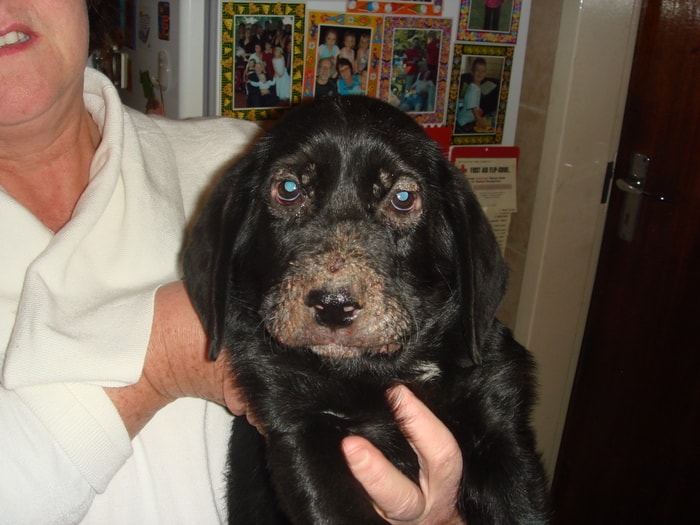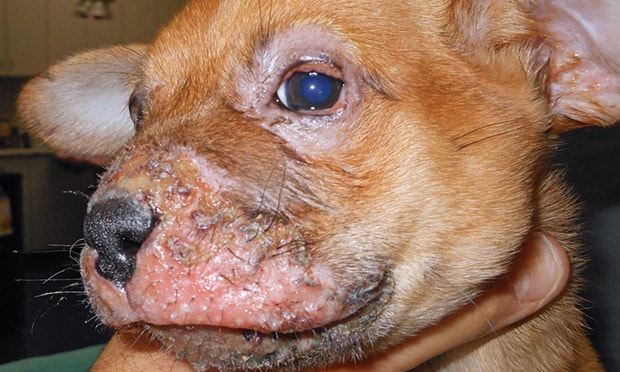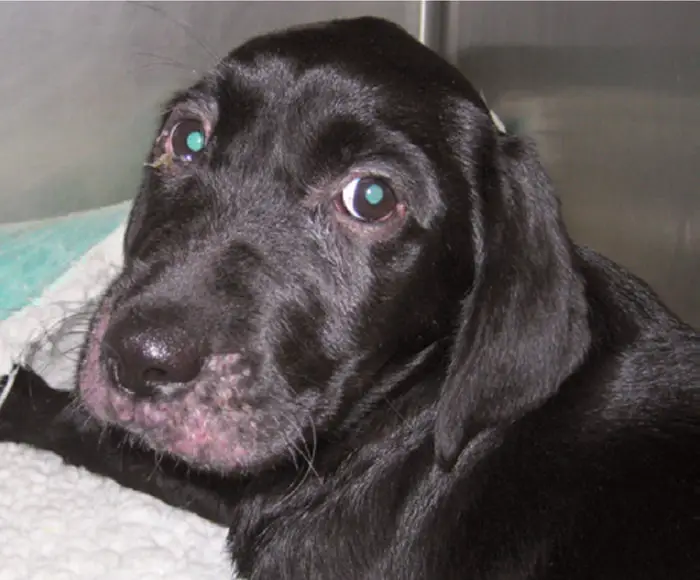Canine juvenile cellulitis, or Puppy strangles, is a granulomatous condition that affects the submandibular lymph nodes and the skin of the pinnae and face. It is an idiopathic disorder of your young dogs, usually 8-10 weeks of age. Entire litters may be affected. Rarely, an adult dog may be affected. It is a very uncommon skin condition for your young dogs.
Importance of Puppy Strangles
Puppy strangles appear to have a possible hereditary component. The condition may appear to have an immune-mediated component, which means the Puppy’s immune system is attacking the Puppy’s skin. Some dog breeds are more susceptible to these diseases, but Golden Retrievers are overrepresented as a breed.

What Causes Puppy Strangles?
The causes of Juvenile cellulitis or Puppy strangles are unknown. There is, however, the possibility of both an immunologic abnormality or abnormality of the immune system and a hereditary component.

Symptoms of Juvenile Cellulitis
There are different types of signs of Puppy strangles. These are:
- Edema and abscesses can be present on the face, lips, pinnae, eyelids, prepuce, or anus.
- Swelling and pus oozing from ear flaps and ear canal.
- Lymphadenopathy.
- Fever.
- Depression.
- Hair loss.
- Limping and Joint pain.
- Difficulty eating.
- Appetite loss.
- Low energy levels.
- Lethargic.
- Lameness.
Diagnosing Puppy Strangles
Your veterinarian will perform various tests that are essential to diagnosing the Puppy’s strangles. The tests include:
- Blood counts.
- Deep skin scrapings.
- Evaluation of the swellings, or pimples, or bumps on the Puppy’s skin
- Skin biopsy.

A deep skin scraping must be done to rule out demodicosis as the etiology. When demodicosis has been excluded, in most cases, your veterinarian can be diagnosed on clinical signs and age of onset. Histopathology of lesions will assist in the diagnosis as well.
Differential Diagnosis of Juvenile Cellulitis
The disease may be confused with the following diseases and conditions
- Demodicosis.
- Pyoderma in puppies
- Angioedema is due to a reaction to an insect bite or vaccine.
- Pemphigus foliaceus.
- Adverse drug reaction.
- Dermatophytosis in dogs.
Treatment for Puppy Strangles
The disease attacks the Puppy’s immune system; that’s why it is essential to stop the auto-immune reaction causing the Puppy to strangle. The most important treatment to suggest to your veterinarian for your pups: large doses of oral corticosteroids followed by a slow taper will resolve lesions in most cases. But in some pups, lesions can recur when corticosteroids are discontinued, or the dosage is reduced.
An ointment is essential for your Puppy, and it helps to soothe skin pain. Your experts may also prescribe antibiotics when a secondary bacterial infection is found. Antibiotics help to reduce the inflammation of the pup’s skin and recover quickly for your Puppy. Sometimes chemotherapy may be suggested.